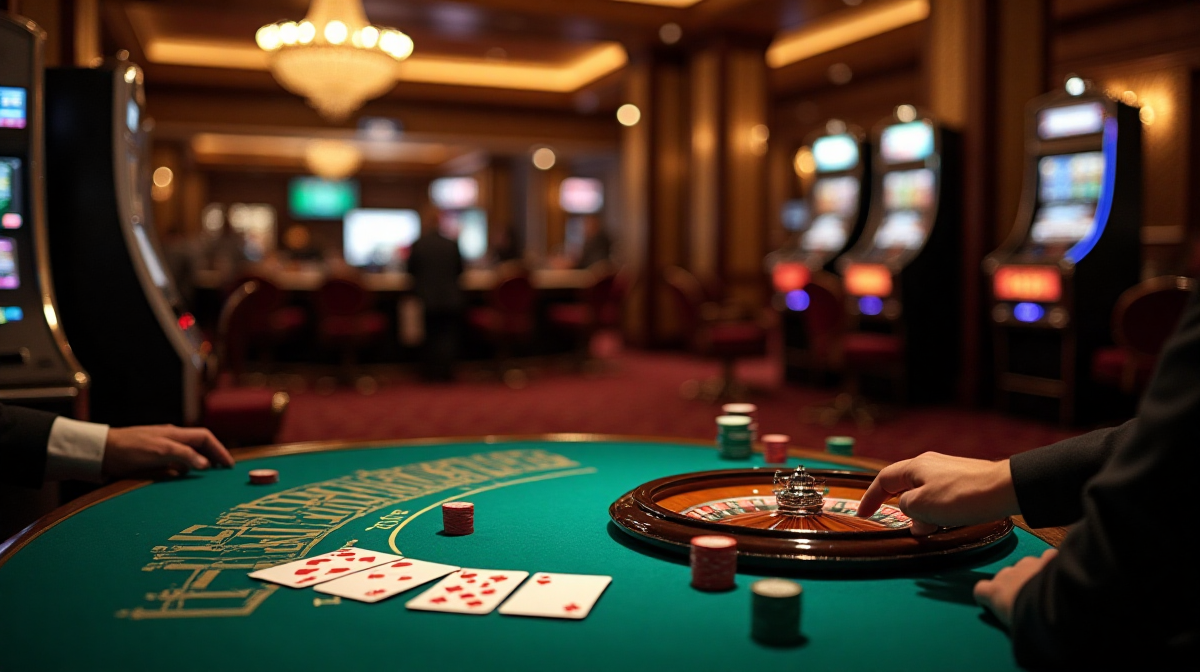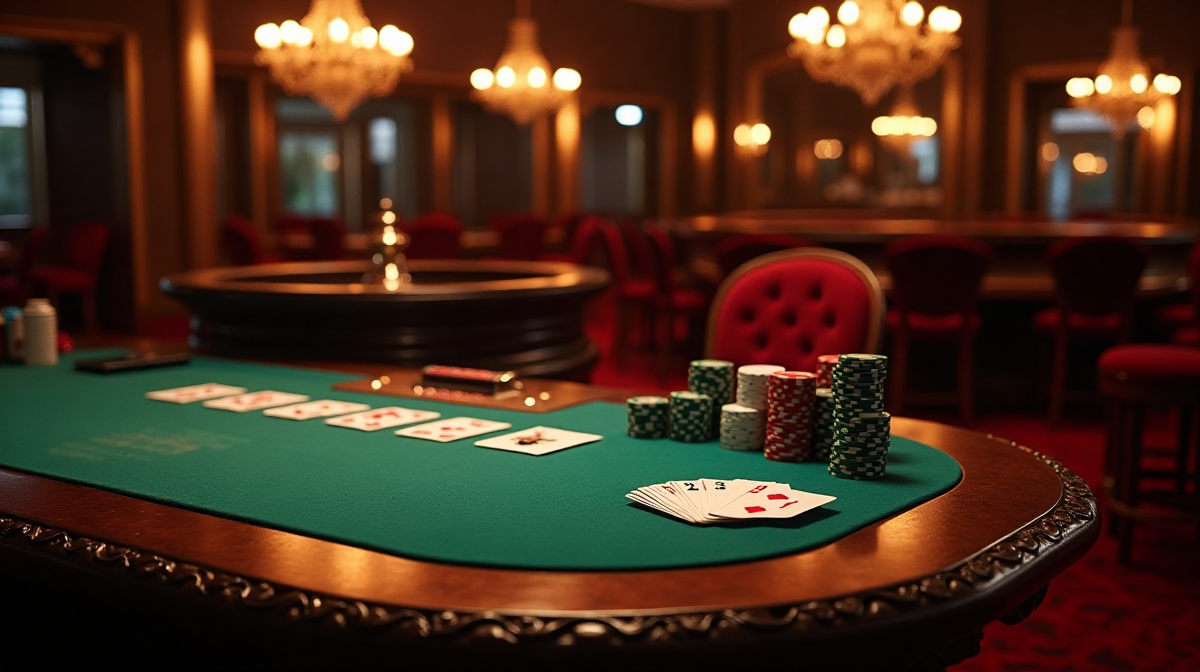Poker Face Meaning: Decode the Tells
What is a 'Poker Face'? Defining the Concept
The “poker face” – a term deeply ingrained in popular culture – refers to the ability to maintain a neutral and unreadable expression, concealing one’s true emotions or intentions. Originating from the game of poker, where concealing the strength of your hand is paramount, it's a skill that extends far beyond the felt. At its core, a poker face is about emotional control and deliberate misdirection. Whether you're enjoying a casual game, or exploring platforms like bc game, the ability to mask your feelings is a significant advantage.
Why is a Poker Face Important in Poker ?
In poker, a strong poker face prevents opponents from gaining valuable information about your hand. It denies them “tells” – the subtle, often unconscious signals that reveal your emotions and intentions. However, its importance isn’t limited to the casino or online at sites like bc game app download. The ability to remain composed and unreadable is invaluable in negotiations, business dealings, and even everyday social interactions. It can help you gain an upper hand, build trust (or feign it), and navigate complex situations with greater success. A solid poker face can even influence your experience with fast-paced games like bc hash game.
Brief History: Origins of the Poker Face & its Evolution
The origins of the poker face are linked to the evolution of poker itself. As the game grew in popularity during the 19th century, particularly in the American West, players realized the advantage of concealing their hand. Early poker was often played in smoky saloons, where observing subtle cues was crucial. This led to a deliberate effort to develop a blank expression, a mask to hide excitement, disappointment, or any other emotion. Over time, the poker face became a symbol of composure, deception, and strategic thinking.
The Psychology Behind the Poker Face
Emotional Control: Suppressing Tells – A Mental Game
Maintaining a poker face isn’t about eliminating emotions; it’s about controlling their outward expression. This requires significant mental discipline. Players must consciously suppress their natural reactions – a widening of the eyes, a slight tremor in the hand, a change in breathing – that could betray their hand. This suppression is a mental game in itself, requiring focus and concentration. Even when playing on bc game, the mental fortitude required for emotional control remains constant.
Cognitive Load & Deception: How Difficult is Maintaining a Poker Face?
Deception is mentally taxing. Actively suppressing emotions and constructing a false facade increases cognitive load – the amount of mental effort required to perform a task. The more significant the deception, and the longer it’s maintained, the more difficult it becomes. This is why experienced poker players often rely on semi-bluffs and calculated risks rather than attempting elaborate, sustained deceptions.
Microexpressions: The Involuntary Leakage of Emotion
Despite our best efforts, emotions can sometimes leak through in the form of microexpressions – fleeting, involuntary facial expressions that reveal our true feelings. These expressions are typically very brief, lasting only a fraction of a second, but they can be detected by trained observers. Understanding poker face meaning also involves recognizing these subtle cues in others.

Decoding the ‘Tells': What to Look For
Physical Tells: Body Language Clues
Hand & Arm Movements: Common Tells & What They Mean
Hands and arms are often the most revealing part of the body. Clenching fists can indicate excitement or stress. Touching the face, particularly the mouth or nose, can suggest deception. Conversely, keeping hands still and relaxed can project confidence.
Facial Expressions: Beyond Microexpressions - Obvious Signals
While microexpressions are subtle, more obvious facial signals can also betray a player’s hand. A raised eyebrow can indicate surprise or disbelief. A slight smirk can suggest confidence. A furrowed brow can indicate confusion or concern.
Breathing & Physiological Responses: Subtle Observable Changes
Changes in breathing rate and other physiological responses can also be telling. Rapid breathing can indicate nervousness or excitement. Increased sweating can suggest stress. Flushing of the face can indicate embarrassment or anger.
Verbal Tells: What Players Say & How They Say It
Speech Patterns: Changes in Pace, Tone, and Volume
Changes in speech patterns can reveal a player’s emotions. Speaking quickly can indicate excitement or nervousness. Speaking slowly can indicate deliberation or deception. A change in tone or volume can also be telling.
Questioning Strategies: Leading Questions & Information Gathering
The way a player asks questions can also reveal their hand. Leading questions are designed to elicit a specific response. Repeatedly asking about the strength of your hand can indicate weakness.
Bet Sizing & Talk: The Connection Between Words & Actions
The connection between a player’s bet sizing and their verbal statements is crucial. A large bet accompanied by a confident statement is more likely to be genuine. A small bet accompanied by a hesitant statement is more likely to be a bluff.
Temporal Tells: Timing & Pacing of Actions
Speed of Decisions: Quick vs. Slow Plays
The speed at which a player makes a decision can be revealing. A quick decision often indicates a strong hand or a pre-determined plan. A slow decision can indicate a difficult choice or a bluff.
Hesitation & Stalling: What It Indicates
Hesitation and stalling are often signs of weakness. A player who is unsure of their hand may try to buy time to think, hoping to gain an advantage.
Reaction Time: Responding to Bets and Raises
The speed with which a player reacts to bets and raises can also be telling. A quick reaction can indicate a strong hand or a well-prepared response. A slow reaction can indicate surprise or uncertainty.

Advanced Tell Detection & Misdirection
Beyond Basic Tells: Layering, Complexity & Combinations
Experienced players don’t rely on single tells. They look for patterns and combinations of tells that reinforce each other. This layering of information provides a more accurate assessment of their opponents’ hands.
False Tells: Planting Misleading Information
Skilled players can intentionally exhibit false tells – signals designed to mislead their opponents. These false tells can be used to induce a specific action or to disguise their true hand.
Reverse Tells: Intentionally Showing a “Tell” to Deceive
A reverse tell is a deliberate display of a tell that is meant to be misinterpreted. For example, a player might intentionally appear nervous to convince their opponents that they are bluffing.
Opponent Profiling: Adapting to Individual Player Tendencies
Each player has unique tendencies and tells. Observing and profiling opponents allows you to tailor your strategy and exploit their weaknesses.
The Poker Face in Modern Poker – Does it Still Matter?
Impact of Online Poker: Reduced Importance of Physical Tells
The rise of online poker has reduced the importance of physical tells. Without the ability to observe body language, players must rely on other cues, such as bet sizing, timing, and chat box behavior. While platforms like bc game offer a virtual experience, the core strategic elements remain.
The Rise of Game Theory Optimal Play: Focusing on Strategy, Not Tells
Game Theory Optimal (GTO) play emphasizes mathematically sound strategies that are difficult to exploit. GTO players focus on balancing their ranges and making decisions based on probabilities rather than relying on tells.
Tells vs. Statistical Analysis: Balancing Observation & Data
Modern poker combines observational skills with statistical analysis. Players use tracking software to collect data on their opponents’ tendencies and then use this data to refine their strategies.
The Continued Value of Live Reads & Exploitative Play
Despite the advancements in poker strategy, live reads and exploitative play remain valuable skills. The ability to quickly assess an opponent’s hand and adjust your strategy accordingly can give you a significant edge.
Poker Face Beyond the Table: Applications in Daily Life
Negotiation & Business Interactions
The ability to maintain a poker face is invaluable in negotiations and business interactions. It allows you to conceal your true interests and intentions, giving you a strategic advantage.
Recognizing Deception in Social Situations
Understanding poker face meaning can also help you recognize deception in social situations. By paying attention to body language, speech patterns, and other cues, you can better assess the sincerity of others.
Improving Emotional Intelligence & Self-Awareness
Practicing emotional control and observing others can improve your emotional intelligence and self-awareness. This can lead to more fulfilling relationships and greater success in all areas of your life.
Conclusion: Mastering the Art of the Poker Face
The Importance of Practice & Observation
Mastering the art of the poker face requires practice and observation. The more you play poker – whether at a poker set with friends or online – the better you will become at controlling your emotions and reading your opponents.
A Final Word on Ethics and Responsible Gameplay
While deception is a part of poker, it’s important to play ethically and responsibly. Avoid using unfair tactics or exploiting vulnerable players.
Resources for Further Learning
Numerous resources are available to help you improve your poker skills, including books, websites, and online courses. Continuously learning and refining your strategy is essential for success.

